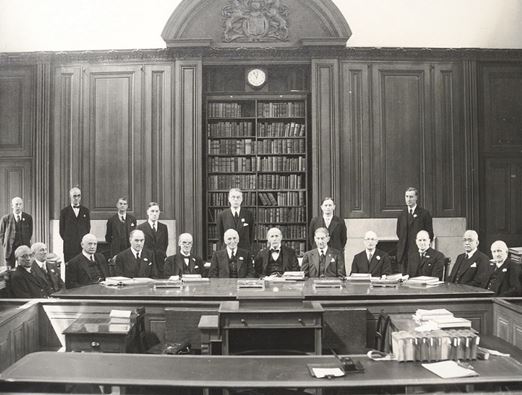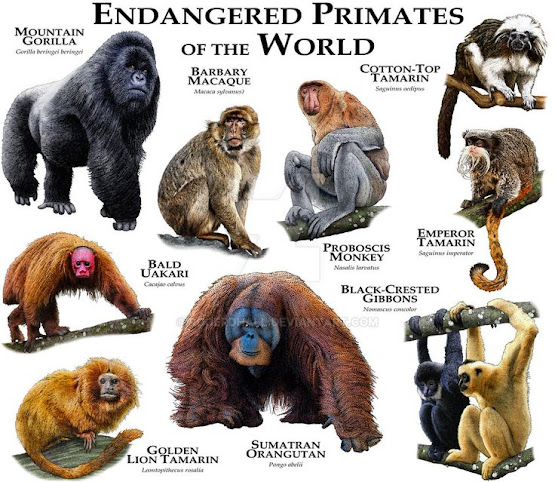Precious (pronounced presh-uhs)
(1) Of high price or great value; very valuable
or costly.
(2) Highly esteemed for some spiritual,
nonmaterial, or moral quality.
(3) Affectedly or excessively delicate, refined,
or nice; fastidious in speech and manners.
(4) Anything though extreme (now rare and usually
used only in clichéd forms).
(5) As precious and semi-precious, descriptors
used in the gem-stone trade.
1250–1300: From the Middle English preciose (valuable, of great worth or
price, costly) from the eleventh century Old French precios (precious, costly, honourable, of great worth), from the
Latin pretiōsus (costly, valuable), the
construct being pretium (price,
value, worth) + ōsus or ous.
The Latin suffix -ōsus
or ous
(full, full of) was used to form adjectives from nouns, to denote possession or
presence of a quality in any degree, commonly in abundance. It was picked up in Middle English as -ous, from the Old French –ous & -eux. The Modern
French is précieux.
The meaning "over-refined" dates from the
late fourteenth century and Dr Johnson noted it also had a secondary inverted
sense of "worthless" whereas today, that’s a pure antonym. As applied to a "beloved or dear person
or object", meaning in that sense was first noted in 1706. Related forms include preciously (adverb)
& preciousness (noun). The formal
division of the gemstone market into precious and semi-precious dates from 1858,
adopting the division introduced in the metals trade in 1776, precious metals
then defined as gold, silver and sometimes platinum, the parameters being those
rare enough to be used as a standard of value yet sufficiently abundant enough
to permit use for coinage (the category of the semi-precious metal was
introduced in 1818). The idea of a
person or object being precious in the sense of "beloved or highly valued”
emerged early in the eighteenth century and was based on the earlier adjectival
use. The now rare noun preciosity
(value, great worth, preciousness, quality of being precious) from the Old
French preciosite and directly from the
Medieval Latin pretiocitas (costliness,
a costly thing), from pretiosus was
from circa 1400.
The equally rare noun precieuse (pedantic woman,
woman aiming at refined delicacy of language and taste) was in 1727 borrowed by
English from French and was from the French précieuse,
noun use of the feminine of précieux. In English, it was best known as a
stereotypical character in Molière's (Jean-Baptiste Poquelin, circa 1622-1763) 1659
comedy of manners Les Précieuses
ridicules (The Affected Young Ladies).
Precious & semi-precious gemstones
Although the notion of a hierarchy pre-dates
modern civilization, gemstones were first classified into the categories of precious and semi-precious in the mid-nineteenth century. Originally an internal system of
classification used by the gemstone trade, the distinction became popular and
use widespread.
Precious was
applied to four types of gems: diamonds, rubies, sapphires, and emeralds. As early as the 1880s, some traders,
doubtlessly seeking commercial advantage, applied the label to other stones
including opal, jade and pearls but most of the industry regards this as mere
puffery and use has never become persistent or generally accepted. Nor have buyers been persuaded; diamonds,
rubies, sapphires and emeralds account for well over ninety percent of the US$
dollar value of gemstone turnover; although not as widely applied, the four are
known also as the cardinal stones.
Semi-precious is
used for all varieties of gemstones not categorized as precious and any gemstone suitable for being used in personal
adornment can be included. Semi-precious stones include gems fashioned from
agate, amber, amethyst, aquamarine, aventurine, chalcedony, chrysocolla,
chrysoprase, citrine, garnet, hematite, jade, jasper, jet, kunzite, lapis
lazuli, malachite, moonstone, obsidian, onyx, peridot, rhodonite, sunstone,
tiger's eye, tanzanite, topaz, turquoise, tourmaline and many other materials.
What can be misleading or confusing is the classification is inherently hierarchical and suggests correlation with cost. An opal has been sold at US$5500 per carat and both jade cabochons and red beryls have traded US$10,000 a carat, all prices higher than that at which most precious stones sell. Nor should precious imply scarcity, many semi-precious stones more rare than the precious four; red beryl, ammolite, benitoite, gem silica, demantoid garnet and tsavorite garnet are all found in fewer locations and produced in smaller quantities than any of the precious stones. Such apparent anomalies are not unusual in classification systems, especially the older sets. In geology the elements described as rare earths aren’t especially rare and in arboreal taxonomy, the soft, light balsa is a hardwood. So, although not entirely arbitrary and meaningless, the classification of gemstones is best considered jargon of the trade although the American Gem Trade Association (AGTA) has in their code of ethics a clause that members should avoid the use of the term ”semi-precious” in describing gemstones. The view of the association is that a term like semi-precious tends to devalue the objects and they’d prefer to have just about all gems thought of as “precious” (and therefore expensive).
Nor does the notion of the four precious gems have long history. One stone regarded as precious since
antiquity was amethyst but it fell from favor when large deposits were found in
South America; the introduction of semi-precious into the lexicon corresponding
with the new discoveries. Of all stones,
diamond is the most mythologized, mostly of modern origin. Historically, colored stones such as ruby and
sapphire were more highly valued than diamond, because diamond was not
particularly rare. That changed in the
twentieth century when, counter-intuitively, large finds in South Africa
created an abundant supply of gem-quality diamonds. Until the South African boom, worldwide
production of diamond amounted only to a few kilograms per year. After huge South African mines opened in
1870, output began to be measured by the ton, causing such a glut the De Beers
cartel was formed to control supply.
Quality diamonds are not at all scarce but De Beers’ control kept prices
high and their near monopoly endured until 2005; even today they control over a
third of world trade. They also
generated demand. Until De Beers
lavished spending on advertising, the diamond engagement ring was almost unknown;
now, it’s an almost essential part of the marriage ritual. The diamond's special position as a precious
stone is due largely to monopoly economics and social engineering.
A pink to blood-red colored stone, the ruby, like
the sapphire, is a variety of the mineral corundum (aluminium oxide). The ruby’s deep red hue and vibrant glow is
because of the presence of the element chromium but, more romantically, it
carries the color of love and desire, a quality perhaps reflected in the prices
the stone attracts at auction, the ruby tending to command the highest
per-carat value of all colored gems. A
particular attraction of the pure ruby are the thin inclusions called needles
which, when intersecting in groups, create a phenomenon called “silk” which
softens the color causing the light to scatter in intricate patterns across the
facets. Ruby is the birthstone for July
and the gem of the fifteenth and fortieth wedding anniversaries.
A cyclosilicate and a variety of the mineral
beryl and colored green by tiny quantities of chromium and sometimes vanadium,
emeralds are not an especially tough stone so their resistance to breakage is
classified by cutters as poor. For this
reason, jewellers often mount emeralds differently, using the shape or
thickness of the supporting metal to afford the stone greater protection. The particular quality of the structure of
the emerald is the often-seen intricate inclusion called the “jardin” (French for “garden”) which
appear in multiples and demand a special technique from those cutting the
stone; gem cutters thus developed the “emerald cut” which lends the cut stone
its distinctive rectangular or square shape.
Those who cut gem stones are formerly styled lapidaries but the more evocative “cutters” seem both preferred and
better. Emerald is the birthstone for
May and the gem of the twentieth and thirty-fifth wedding anniversaries.
The sapphire is another variety of the mineral
corundum, consisting of aluminium oxide with trace quantities of elements such
as iron, titanium, chromium, vanadium, or magnesium. A notably hard stone, the sapphire is third
in hardness behind the diamond and moissanite and has some useful optical
qualities which is why it’s used also in non-ornamental applications, such as
infrared devices, wristwatch crystals and ultra- thin electronic wafers, used
as the insulating substrates of specific-purpose solid-state electronics such
as integrated circuits and blue LEDs, the latter of such importance the
discovery of the processes which permitted its creation gained the responsible
scientists the 2014 Nobel Prize for physics.
Although most associated with hues of blue, pure
sapphires are actually white, but in the presence of titanium and iron traces
they acquire their velvety blue shade and there’s long been a speculation
there’s some link between the name and the planet Saturn. Apart from the classic blue, there are the
rarer “fancy sapphires” which exist in just about every color from green to
pink (even a highly prized black and there are “parti sapphires” which display
two or more colors) except for red; what would technically otherwise be a red
sapphire is actually a ruby. Known as
the gemstones of wisdom, truth and justice, sapphire is the birthstone for
September and the gem of the fifth and forty-fifth wedding anniversaries. A sapphire jubilee happens after sixty-five
years.
Lindsay Lohan's engagement ring.
From the early fifteenth century, in English also
picked up another meaning which appeared also in Classical Latin: "a person of
great worth". In mathematics, later in
the same century, diamond had come to describe a "geometric figure of four
equal straight lines forming two acute and two obtuse angles. It was used for one of the four suits in
playing cards from the 1590s, having been an adjective to describe clusters of
diamonds since the 1550s. In baseball,
the use to refer to the square space enclosed within the four bases dates from
1875.
Created when carbon is subject to immense
pressure, diamond possess the highest shine of all transparent gemstones and is
both the hardest known natural material on earth and the one with the highest
thermal conductivity. Able to be
scratched only by another diamond, the cutting of the stones is also done with
another diamond. To determine their
quality, diamonds like all precious stones are graded using the 4C system of
connoisseurship: carat weight, color, clarity and cut. Diamond is the
birthstone for April and the gem of the tenth and sixtieth wedding
anniversaries.





















